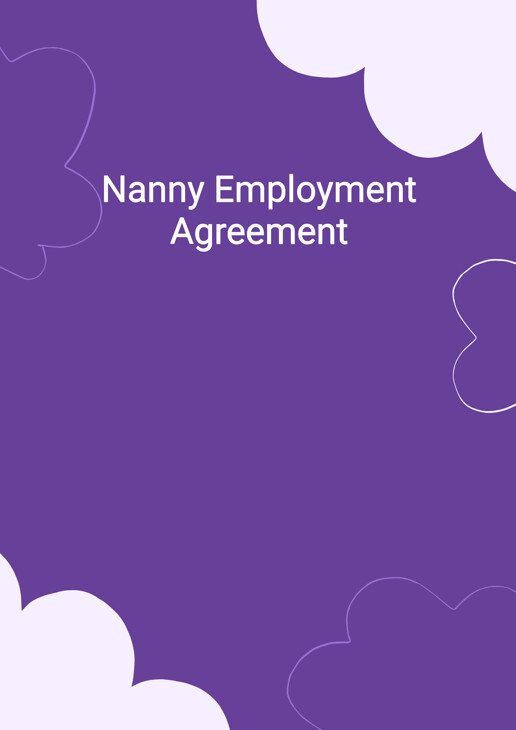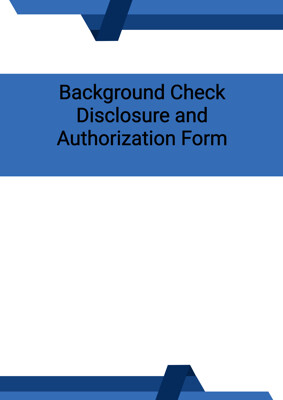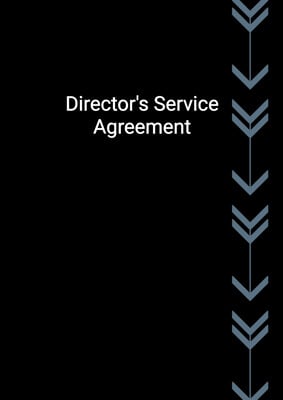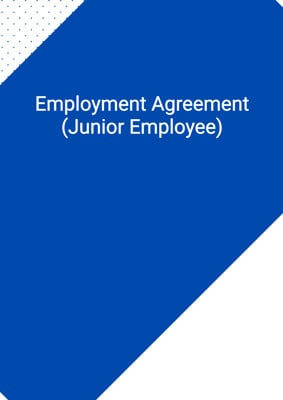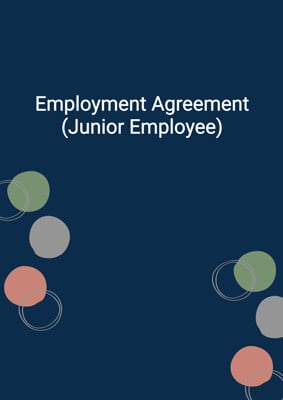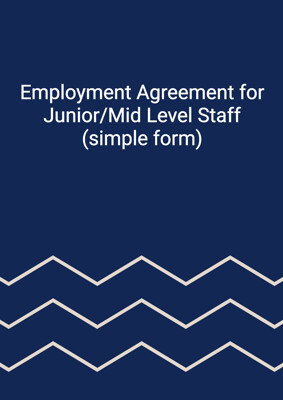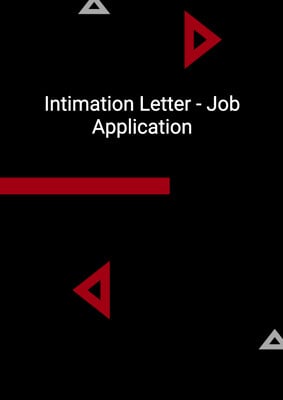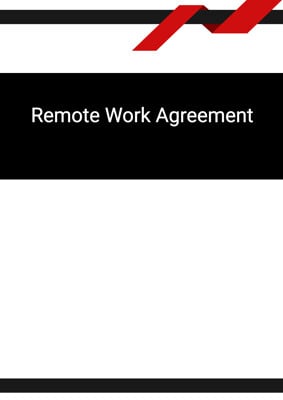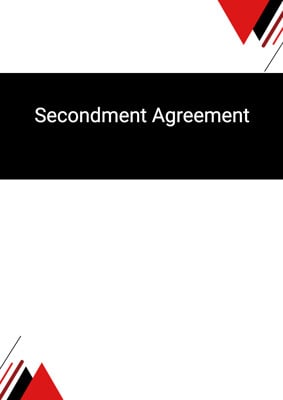How to Tailor the Document for Your Need?
01
Create Document
Fill in the details of the parties. You can click the "Fill with Member’s Information" button to complete it with information saved to your account.
02
Fill Information
Please fill in any additional information by following the step-by-step guide on the left hand side of the preview document and click the "Next" button.
03
Get Document
When you are done, click the "Get Document" button and you can download the document in Word or PDF format.
04
Review Document
Please get all parties to review the document carefully and make any final modifications to ensure that the details are correct before signing the document.
Document Preview
Document Description
The Nanny Employment Agreement is a document that outlines the terms and conditions of employment between a nanny and an employer. This agreement is important as it establishes the rights and responsibilities of both parties, ensuring a clear understanding of expectations and obligations.
The entire document is divided into several sections, each addressing different aspects of the employment agreement. The first section provides a detailed introduction, stating the purpose of the agreement and identifying the parties involved. It also highlights the importance of the nanny's role in providing professional child care services.
The subsequent sections of the document cover various aspects of the employment arrangement. Section 1, titled 'Work Description,' outlines the specific duties and responsibilities of the nanny, including feeding the children, preparing meals, grocery shopping, and assisting with homework. It emphasizes the importance of ensuring the health, safety, and well-being of the children. The section also mentions the nanny's flexibility in adapting to unexpected changes in the schedule.
Section 2, titled 'Commencement Date,' specifies the date on which the nanny will start working and the duration of the employment agreement. This section ensures clarity regarding the commencement of the employment relationship.
Section 3, titled 'Work Schedule,' details the expected working hours of the nanny, including the normal working hours from Monday to Friday. It also addresses overtime work and the employer's responsibility to notify the nanny in advance. This section emphasizes the importance of punctuality and the consequences of repeated lateness.
Section 4, titled 'Compensation,' outlines the salary and payment terms for the nanny. It mentions the monthly salary, overtime fees, and the frequency of payment. It also highlights the employer's obligation to withhold taxes and provide a payslip to the nanny.
Section 5, titled 'Leave Entitlements,' covers the nanny's entitlement to paid statutory holidays and paid time off. It specifies the number of paid leave days and the eligibility criteria. It also addresses the rollover of unused leave days and the payment of any remaining leave balance upon termination.
Section 6, titled 'Other Benefits,' lists additional benefits provided to the nanny, such as petty cash for out-of-pocket expenses, a vehicle allowance or a provided vehicle, a mobile phone for communication, health insurance coverage, and meals during working hours.
Section 7, titled 'Emergency Contact,' provides contact information for emergencies and outlines the nanny's responsibility to transport the children to a clinic or hospital if necessary.
Section 8, titled 'Warranties,' states the nanny's representations and warranties regarding their authority, capacity, and truthfulness in providing information.
Section 9, titled 'Nanny's Additional Obligations,' specifies certain obligations that the nanny must adhere to, such as obtaining prior authorization for medication, refraining from having guests without consent, maintaining confidentiality, and abstaining from alcohol or illegal drugs while on duty.
Section 10, titled 'Term and Termination,' clarifies that the employment is at-will and can be terminated by either party with or without cause. It also outlines the notice period for termination and the grounds for immediate termination.
Section 11, titled 'Confidentiality,' emphasizes the strict confidentiality of information obtained during the employment and the consequences of breaching this obligation.
Section 12, titled 'Amendment,' states that any changes to the agreement must be in writing and signed by both parties.
Section 13, titled 'Entire Agreement,' confirms that this agreement constitutes the entire agreement between the employer and the nanny.
Section 14, titled 'Severability,' addresses the invalidity or unenforceability of any provision and the parties' obligation to negotiate a valid substitute provision.
Section 15, titled 'Disputes,' specifies the governing law, the requirement for voluntary mediation in case of disputes, and the jurisdiction of the courts.
Section 16, titled 'Counterparts,' allows the agreement to be executed in multiple counterparts, with each counterpart being considered an original document.
In conclusion, the Nanny Employment Agreement is a comprehensive document that covers all aspects of the employment relationship between a nanny and an employer. It ensures clarity, sets expectations, and protects the rights of both parties.
How to use this document?
1. Provide information: Enter the employer's and nanny's information, including their mailing addresses. This ensures clear identification of both parties.
2. Specify work description: Clearly outline the duties and responsibilities of the nanny, including child care tasks, housekeeping, and daily activities. This ensures a shared understanding of the scope of work.
3. Agree on commencement date: Determine the date on which the nanny will start working and the duration of the employment agreement. This establishes the timeline for the employment relationship.
4. Establish work schedule: Discuss and agree on the expected working hours, including regular working hours and meal intervals. Address the employer's responsibility to notify the nanny in advance of any overtime work.
5. Determine compensation: Set the monthly salary for the nanny and specify the payment terms. Discuss overtime fees and the provision of a payslip. Ensure compliance with tax withholding requirements.
6. Address leave entitlements: Clarify the nanny's entitlement to paid statutory holidays and paid time off. Specify the number of leave days and the eligibility criteria. Discuss the rollover of unused leave days and the payment of remaining leave balance upon termination.
7. Provide other benefits: Discuss and agree on additional benefits, such as petty cash for expenses, a vehicle allowance or a provided vehicle, a mobile phone, health insurance coverage, and meals during working hours.
8. Establish emergency contact: Provide contact information for emergencies and discuss the nanny's responsibility to transport the children to a clinic or hospital if necessary.
9. Discuss warranties: Ensure the nanny's representation and warranty regarding their authority, capacity, and truthfulness in providing information.
10. Address additional obligations: Discuss and agree on specific obligations, such as obtaining authorization for medication, refraining from having guests without consent, maintaining confidentiality, and abstaining from alcohol or illegal drugs while on duty.
11. Clarify termination terms: Discuss the at-will nature of the employment and establish the notice period for termination. Address grounds for immediate termination.
12. Emphasize confidentiality: Highlight the strict confidentiality of information obtained during the employment and the consequences of breaching this obligation.
13. Discuss amendment process: Clarify that any changes to the agreement must be in writing and signed by both parties.
14. Confirm entire agreement: State that the agreement constitutes the entire agreement between the employer and the nanny.
15. Address disputes: Specify the governing law, the requirement for voluntary mediation in case of disputes, and the jurisdiction of the courts.
16. Execute counterparts: Sign the agreement in multiple counterparts, with each counterpart being considered an original document.
By following these steps, both the employer and the nanny can ensure a clear understanding of the terms and conditions of their employment agreement and avoid any potential misunderstandings or disputes.
Not the right document?
Don’t worry, we have thousands of documents for you to choose from:
